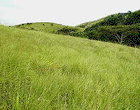 
|
|
Vegetation and Flora of China Chinese
flora has three characteristics. Statistics show that vascular plants in China have 353 families, 3,184 genera, and 27,150 species, or 56.9 percent, 24.5 percent and 11.4 percent respectively of the world's total, ranking China third in number of species after Malaysia and Brazil. 2.
Complicated geographical distribution: Of China's seed plants, 108 genera of 46 families are cosmopolitan, 1,467 genera of 168 families tropicopolitan, 931 genera of 77 families temperate, 278 genera of 7 families paleo-Mediterranean, and 196 genera of 3 families peculiar to China. China embraces almost all the woody temperate species and genera in the world and is the centre ornative home of many of them. 3.
Ancient origin: There
are numerous ancient or primitive families and genera and Found
over vast areas in the temperate, subtropical, and 2. Mixed needleleaf and broadleaf forests: A transition type between cold-temperate coniferous forest and temperate deciduous broadleaf forest, found mainly in the upper parts of the eastern mountain areas of northeast China and the subtropical mountain regions.
Found
over vast areas in the humid warm-temperate, 4. Bushes: Including
the alpine-cold evergreen bush and the deciduous bush
Including
such subtypes as steppe (typical grassland), forest grassland, meadow
grassland, desert steppe, and alpine-cold steppe. These grasslands
and steppes provide the principal natural pastures for China. 7.
Deserts: Widespread in the desert regions northwest of the Helan Mountains. 8.
Alpine tundras: Found only at the summit of the Changbai and Altay mountains, at an elevation of 2,100 and 3,000 metres or more respectively. 9.
Alpinecushion plants:
Growing on the Qinghai-Tibet Plateau and surrounding 10.
Meadows: Overgrown
with perennial herbs, and found in low-lying waterlogged | ####China
Basics
|
|
China Scientific Book Services Co. Ltd., CSBS Bookstore Address: A-1120, Kingsound (Jiahao) International Center, No.116, Zi Zhu Yuan Road, Haidian District, Beijing 100097, China TeL: +86-10-58930115, Fax: +86-10-58900116 Email: hceis@hceis.com All Right Reserved |




